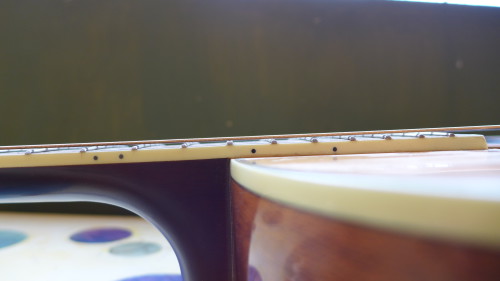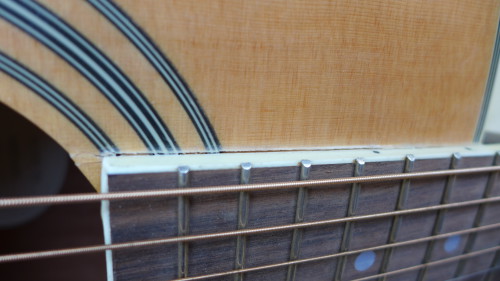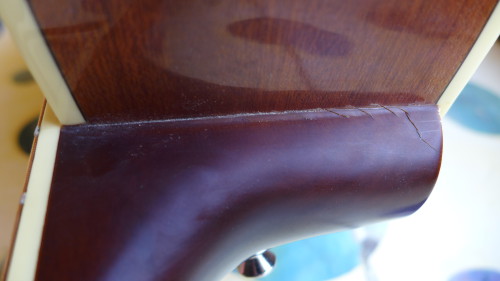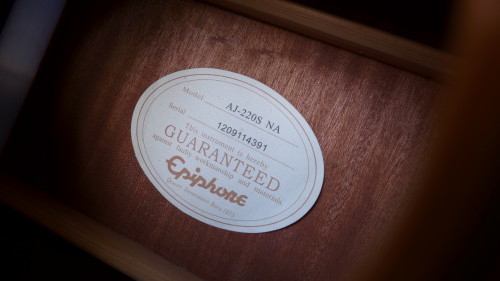Already in La Paz, the guitar was out of shape. Sadly unlike with cyclist, this could not be mended by some days of resting. With some meddling and putting a piece of a bicycle tube under the bridge i could get it back to a level that it was playable. Another month of riding through one of the driest climates on this planet and it was beyond my skills to repair it. The neck was bend. And most of the frets produced only a rattling sound with the highest point of the neck now being around the 14th fret.

While there were no outer signs visible at the beginning, by the time i had reached Cafayate, cracks were obviously showing.
Also on the top where body and neck are joined. Luckily this was more cosmetic and nothing substantial.

I adressed the problem as one of the first things after arriving at the Huayra Sanipi. Pepo, one of the two owners, was quick to call up a friend of his and twenty minutes later i was talking to Pedro, an immensely helpful guy, still a student but soon to be a luthier himself. He took the guitar to his professor and came back with some suggestions how to solve the matter. Some rather cheap, but only the most expensive one offering a solution that would last.
As the neck adjustment screw was still intact, the luthier changed to the medium expensive version without replacing the fretboard. Which brought the price down to about half of what we had agreed on and i still had a working guitar. In the evening we played a small concert to celebrate the rebirth of the that guitar.
If someone is looking for a good budget guitar, this is a good choice. I’m not sure if the variations in quality are a big issue. Playability and sound were outstanding for an instrument with a such a low pricetag. Just be aware of dry climates while travelling with wooden instruments. I weren’t thinking about how to humidify my guitar until the neck was already bent.

